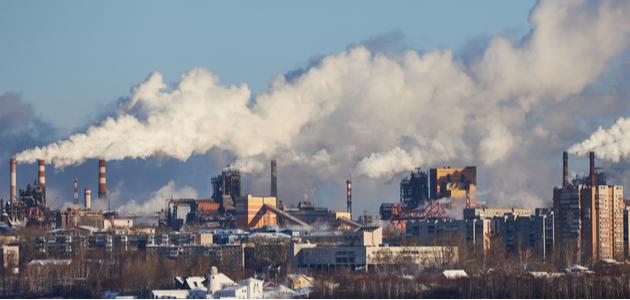Protection Expert For Developing Skills LLC.
Environmental and Atmospheric Factors on Radiation Dispersion
The Impact of Environmental and Atmospheric Factors on Radiation Dispersion Prepared and presented by Major General Ayman Sayed El-Ahl Introduction I present to you the third article in a series of articles on the potential nuclear scenario: Link to the scientific study: Reveals the dimensions of radiation risks and their regional impacts on the Arabian Gulf region Link:https://px4d.com/the-possible-nuclear-scenario-a-scientific-study-reveals-the-dimensions-of-radiation-risks-and-their-regional-impact-on-the-arabian-gulf-region Link to the first article: #Iranian nuclear facilities: A map of potential risks https://px4d.com/iranian-nuclear-facilities-a-map-of-potential-risks Link to the second article: #Permissible and dangerous levels of radiation https://px4d.com/permissible-and-hazardous-radiation-levels
Major General Ayman Sayed El-Ahl
6/15/20254 min read


The Impact of Environmental and Atmospheric Factors on Radiation Dispersion
Prepared and presented by Major General Ayman Sayed El-Ahl
Introduction
I present to you the third article in a series of articles on the potential nuclear scenario:
Link to the scientific study: Reveals the dimensions of radiation risks and their regional impacts on the Arabian Gulf region
Link to the first article: #Iranian nuclear facilities: A map of potential risks
https://px4d.com/iranian-nuclear-facilities-a-map-of-potential-risks
Link to the second article: #Permissible and dangerous levels of radiation https://px4d.com/permissible-and-hazardous-radiation-levels
Introduction
When radioactive materials are released into the atmosphere, the risks are not confined to the point of emission. Instead, they extend to cover vast areas, and the extent of this spread largely depends on complex environmental and atmospheric factors. Understanding these factors is not merely a scientific detail; it is the cornerstone for predicting the path of contamination, identifying at-risk areas, and developing effective emergency response plans.
In this article, we will delve into how wind, atmospheric stability, precipitation, and topography influence the movement and dispersion of radioactive materials, and how these factors can transform a single scenario into entirely different outcomes.
Key Meteorological Factors Controlling Radiation Dispersion
1. Wind Direction: The Primary Driver
Wind direction is the most obvious and crucial factor in determining the initial trajectory of a radioactive plume. Simply put, radioactive materials will move with the wind from their point of emission. If the wind consistently blows in a specific direction, the radioactive materials will concentrate in that direction.
* Prevailing Winds: Determine the general direction of contamination spread.
* Variability: Wind direction can change significantly throughout the day or season, leading to complex and unpredictable dispersion patterns. Local topography (such as mountains and valleys) can also channel winds and alter their course.
### 2. Wind Speed: The Dilution and Velocity Factor
Wind speed affects two main aspects:
* Dilution: The higher the wind speed, the greater the initial dispersion of the radioactive plume, which reduces its concentration near the source. While this might seem positive, it also means that radioactive materials will spread over a wider area.
* Travel Time: Faster winds mean the plume will reach farther distances in a shorter time, reducing the available response time for affected areas.
Conversely, slow winds lead to higher concentrations near the source and allow more radioactive materials to deposit in nearby areas.
### 3. Atmospheric Stability: Controlling Vertical Dispersion
Atmospheric stability refers to the atmosphere's tendency to allow or suppress vertical air movement. This significantly impacts how high a radioactive plume rises and how much it disperses vertically:
* Unstable Atmosphere: Often occurs on sunny days with strong surface heating. It leads to strong vertical air currents that lift the plume and disperse it vertically rapidly. This reduces ground-level concentrations but spreads the material over a larger area.
* Stable Atmosphere: Often occurs on clear nights with temperature inversions (where heavy, cold air is near the ground). This limits vertical mixing, keeping the plume narrow and concentrated near the ground, leading to much higher ground-level concentrations at distant locations. These conditions are the most dangerous.
* Neutral Atmosphere: Represents intermediate conditions between stable and unstable, with moderate vertical mixing.
### 4. Mixing Height: The Natural Ceiling for Pollution
The mixing height is the maximum altitude to which pollutants can mix vertically in the atmosphere. This height acts as a natural ceiling, trapping pollutants beneath it. The lower the mixing height, the higher the concentrations of radioactive materials within this layer, increasing the risk of ground-level exposure.
### 5. Precipitation (Rain and Snow): The Cleaning and Contamination Factor
Rain and snow can play a dual role:
* Cleaning (Wet Deposition): Raindrops and snowflakes can
* Wet Deposition: Raindrops and ice crystals "sweep" radioactive particles from the air as they fall, reducing their concentration in the atmosphere.
* Ground Contamination: Conversely, this process leads to the deposition of radioactive materials on the ground, which can result in localized areas of high ground contamination, even at great distances from the emission point.
6. Terrain: Shaping the Dispersal Path
Geographical features such as valleys, hills, and coastlines can significantly influence wind patterns and, consequently, the dispersal path of a radioactive cloud. For example, valleys can direct the cloud along their length, while coastal areas can experience changes in wind direction (sea and land breezes) throughout the day, creating complex dispersal patterns.
The Importance of Studying Weather Models and Conditions
To understand these complex interactions and predict the path and concentration of radioactive materials, scientists use atmospheric dispersal models. These models combine detailed meteorological data with information about the release source to estimate:
* The path of the radioactive cloud.
* Concentration levels in the air and on the ground.
* Potential dose rates to individuals.
This modeling is an indispensable tool for emergency planners and decision-makers, providing vital information needed to make informed decisions about evacuation, sheltering, and other protective measures to protect populations.
Conclusion
Understanding the influence of environmental and atmospheric factors on radiation dispersal is not merely an academic exercise; it is an imperative in planning for any potential nuclear scenario. Awareness of these complex dynamics enables us to develop more accurate and effective response strategies, reducing risks to lives and the environment. In the next article, we will delve into the methodology for calculating radiation dispersal and how to determine safe distances and vulnerable areas based on these factors.
#NuclearScenario #NuclearRisks #NuclearSecurity #NuclearRadiation #CrisisManagement #NuclearSafety #NuclearFacilities #ScientificStudy #RiskAnalysis #ImpactOfGulfRadiation #IranNuclearRisks #GulfNuclearSecurity #GulfEmergencyPlans #GulfRadioactiveContamination #ArabianGulf #GulfSecurity #GulfCountries #SaudiArabia #Qatar #Bahrain #UAE #Kuwait #Iran #MiddleEast #ProtectionExpert #MajorGeneralAymanSayedAlAhl #Sievert #Doses #Radiation #Aerial #WeatherConditions #Models #Study #DecisionMakers #Emergencies #Training #Spread #Risks #Envelope
Safety and Security
Enhancing security through tailored training solutions.
Consulting
Training
info@px4d.com
+971-505650365
© 2025. All rights reserved.
CONTACT US
